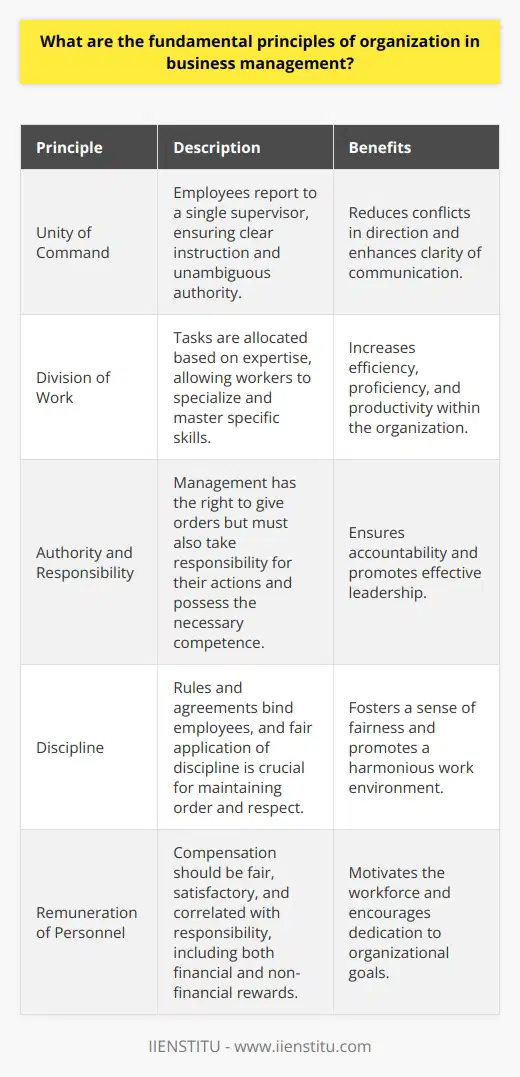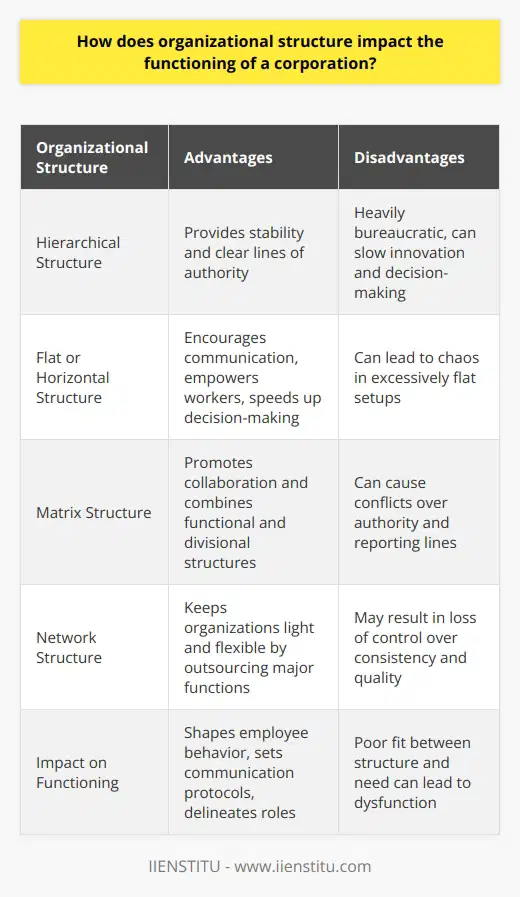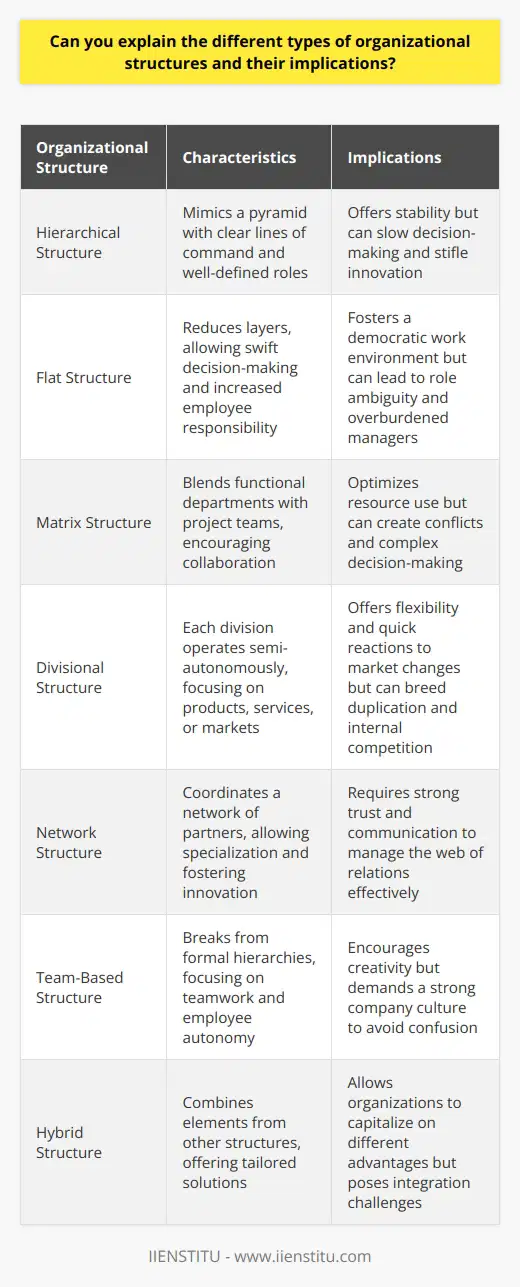
Organizations, regardless of size and industry, function through well-coordinated systems that stem from clearly defined principles of structure. These foundational elements are pivotal in creating a framework that supports efficient operations, effective decision-making, and strategic growth.
The objective of this guide is to provide a comprehensive understanding of organizational structuring, delving into the intricacies of organizational principles that bolster this efficiency. Through illustrative examples and a step-by-step analysis, this article offers readers valuable insights into the creation and implementation of robust organizational structures.
Understanding the Basics of Organizational Structuring
Defining Organizational Principles
So, what exactly are organizational principles? They are the underlying rules and guidelines that shape how an organization operates, bringing clarity and order to complexity. Organizational principles lay the groundwork for establishing roles, responsibilities, and procedures, thereby creating a stable backbone for the entity. They facilitate the negotiation of the vast array of challenges organizations face, providing direction and ensuring consistency in actions and outcomes. These principles act as a blueprint from which all organizational activities are designed and managed.
Core Components of Organizing
The effective organization of a company hinges on three key elements: the division of labor, a hierarchy of authority, and coordination mechanisms. Division of labor entails assigning specific tasks to employees or departments, creating specialists who excel at their tasks and improve efficiency. Hierarchies establish clear lines of authority and a structured path for escalation and decision-making.
Coordination mechanisms, on the other hand, ensure that the separate efforts of individuals and departments come together to achieve collective goals. When cohesively integrated, these elements forge an organizational structure capable of overcoming the complexities of business operations.
Fundamental Principles of Organization
Division of Labor
The division of labor is an organizational principle that advocates the subdivision of work into clear, distinct tasks. This specialization allows workers to focus on aspects of the work for which they are best equipped, thereby enhancing proficiency and productivity. However, while specialization can increase efficiency, it may also lead to monotony and decreased job satisfaction. Striking the right balance is crucial for capitalizing on the benefits of the division of labor while mitigating potential detriments.
Unity of Command
Unity of command is another principle dictating that each employee should receive orders and be accountable to one superior only. This ensures that conflicting instructions do not impede progress and allows for clear responsibility and accountability within the organizational framework. The clarity provided by this principle is indispensable in maintaining organized and effective operations.
Chain of Command
Embedded within the concept of unity of command is the chain of command, a hierarchical structure of authority that establishes a direct line of reporting from the bottom to the top of an organization. This ladder-like system delineates the official communication channels, allowing for orderly governance and the efficient flow of information across the organization's various levels.
Span of Control
The span of control relates to the number of subordinates that a manager can effectively oversee. While a narrower span allows for close supervision and quick communication, a broader span encourages autonomy and reduces overhead. Hence, finding the optimal span is essential for balancing managerial control with employee empowerment.
Centralization vs. Decentralization
Centralization and decentralization represent a spectrum of how decision-making powers are distributed across an organization. Centralization rallies decision-making authority within a compact group, typically higher management, fostering uniformity and coherence. Decentralization diffuses this authority, granting more autonomy to lower-level managers and individual units to make decisions swiftly and with better local insights.
Coordination
Effective coordination binds the various arms of an organization, guiding them toward unified goals while accommodating the differing functions and tasks. It is about aligning objectives and activities, ensuring that every component of the organization not only understands the larger vision but also actively works in a synchronized manner towards it.
Applying Organizational Principles Effectively
Analyzing Organizational Needs
To apply structural principles effectively, one must first critically analyze the specific needs of their organization. This involves comprehensively assessing business objectives, operational processes, and strategic imperatives to craft a structure that supports these elements. Understanding that there is no one-size-fits-all solution is crucial in designing a structure that is appropriately tailored to an organization's unique demands.
Designing Organizational Structures
From traditional structures like functional or divisional to more contemporary models such as network or team-based arrangements, the design of an organizational structure should reflect the strategic direction and operational nuances of the firm. Each model presents distinct advantages and challenges, and often, a hybrid approach is required to meld the benefits of various structures in a cohesive, functional manner.
Implementing Changes and Adapting Structure
Once a structure is designed, implementing changes requires careful handling to minimize disruption and resistance. Best practices involve clear communication, involvement of key stakeholders throughout the process, and providing adequate training and support. Organizations must remain agile, constantly evaluating the effectiveness of their structure and ready to make adjustments in response to internal changes and external market forces.
Real-world Examples and Case Studies
Successful Organizational Structures
By examining organizations such as Google, with its fluid and innovative approach to structure, or Walmart's precise and hierarchical model, one can draw valuable lessons on effective structuring. These companies' successes underline the symbiotic relationship between an organization's goals and its structure, reinforcing the principle that well-thought-out organizational design is a critical driver of success.
Structuring Pitfalls to Avoid
There are numerous examples of structuring gone wrong, often characterized by misalignments between organizational design and strategy, insufficient communication mechanisms, and rigid hierarchies that stifle innovation. These examples serve as cautionary tales, proving that when structuring is not in harmony with organizational dynamics, inefficiency and failure often ensue.
The Principles of Organization form the cornerstone upon which successful businesses are built.
This article has traversed through the landscape of organization theory, elucidating the various structuring components, their application, and the delicate balance needed to achieve efficient operations. Intentional structuring, guided by these principles, remains paramount in the pursuit of organizational triumph.
Additional Resources
For readers interested in delving deeper into organizational structuring, a wealth of knowledge awaits in academic journals, free MBA courses, and online certification courses. Engaging with such materials provides further insights and equips individuals with advanced tools for analyzing and improving organizational designs.
Frequently Asked Questions
What are the fundamental principles of organization in business management?
Understanding Organizational Principles
Effective business management relies on foundational principles. These principles guide organizational structuring. They also streamline business functions. Every organization must adhere to these fundamentals for optimal performance.
Unity of Command
Employees answer to one supervisor. This principle ensures clear instruction. Authority is unambiguous. Employees know who to consult. Conflicts in direction diminish.
Division of Work
Specialization increases efficiency. Workers master specific tasks. Proficiency and skill levels rise. Productivity often improves. This principle advocates allocating tasks based on expertise.
Authority and Responsibility
Management has the right to give orders. With authority comes responsibility. Leaders must answer for their actions. They should possess the competence to command.
Discipline
Discipline is essential for order. Rules and agreements bind employees. Fair application is crucial. It promotes respect and fairness.
Unity of Direction
One plan for a group of activities. Teams align towards common objectives. Efforts are directed towards organizational goals. It avoids pulling in different directions.
Subordination of Individual Interest
Organizational goals come first. Personal interests must not overshadow them. Harmony rises when personal and organizational goals align.
Remuneration of Personnel
Compensation should be fair and satisfactory. It motivates the workforce. Pay correlates with responsibility. It can be financial or non-financial.
Centralization and Decentralization
This is the extent of decision-making power. A balance is necessary. Centralization implies fewer people make decisions. Decentralization disperses authority across levels.
Scalar Chain
Hierarchy must be clear. It means a chain of superiors from highest to lowest. Information flows systematically. Respect for the chain ensures order.
Order
Order pertains to people and materials. There must be a place for everything. Personnel must fit their roles. Efficiency and productivity benefit.
Equity
Kindness and justice in treatment are necessary. It fosters loyalty and devotion. Managers must practice equity with their subordinates.
Stability of Tenure of Personnel
Job security enhances performance. Frequent turnover hampers growth. Employees perform better in stable environments.
Initiative
Encouraging initiative reaps rewards. Workers suggest and execute plans. It fosters creativity and innovation. Empowerment leads to proactive behavior.
Team Spirit
Teamwork is invaluable. It builds strength and unity. Collaboration overcomes silo mentality. Esprit de corps is the lifeline of the organization.
These principles guide the orchestration of activities. They foster the growth and success of businesses. Managers implement these to achieve organizational harmony. Understanding them is key to adept management.

How does organizational structure impact the functioning of a corporation?
Understanding Organizational Structure
An organization’s structure determines its shape and hierarchy. It impacts many aspects of performance. It affects everything from decision-making speed to employee satisfaction.
Types of Structures
There are several types of corporate structures. Each has unique advantages and disadvantages.
- Hierarchical Structure: Clear, top-down layers of management define this type. Heavily bureaucratic, it can slow innovation. Yet, it provides stability and clear lines of authority.
- Flat or Horizontal Structure: Fewer layers exist here. Communication flows more freely. Decision-making quickens. Workers enjoy empowerment. In excessively flat setups, chaos can ensue.
- Matrix Structure: This combines functional and divisional structures. Employees report to multiple managers. Collaboration is common. Conflicts over authority, however, can arise.
- Network Structure: Organizations outsource major functions. It keeps them light and flexible. Control over consistency and quality may suffer.
Impacts on Functioning
An organization’s structure shapes employee behavior. It sets protocols for internal communication. It delineates roles and responsibilities. A poor fit between structure and need spells dysfunction.
Decision Making
Centralized structures tend to slow decision-making. Leaders make most decisions. Employees may feel disengaged. Decentralized structures speed up the process. They encourage autonomy and innovation. Coordination becomes a challenge, though.
Efficiency
Hierarchical structures aim for operational efficiency. Red tape often hinders quick action. Flat structures prioritize agility. They risk losing focus without tight controls.
Communication
Open structures foster communication and collaboration. Hierarchies may stifle free information flow. Efficient communication supports problem-solving. It shares knowledge effectively across the corporation.
Adaptability
Rigid structures resist change. They may provide stability but falter in dynamic markets. Flexible structures adjust better to change. They might struggle to maintain consistency.
The organizational structure wields considerable influence over a corporation. It can dictate the pace and quality of work. It sways how staff feel and act. Aligning structure with strategy is crucial. Firms should assess regularly. They must adapt as circumstances change. Only then can they truly thrive.

Can you explain the different types of organizational structures and their implications?
Understanding Organizational Structures
Organizational structures depict how companies arrange their teams. These frameworks shape workflows. They influence information flow and authority lines. Varied structures impact organizations differently.
Hierarchical Structure
The most known type is the hierarchical structure. It mimics a pyramid. At the top sits the highest authority. Layers flow down from this point. Fewer people occupy each level up. This setup offers clear lines of command. It fosters well-defined roles and responsibilities. It can, however, slow decision-making. This occurs as approvals need hierarchical ascent. It can also stifle innovation. Layers often impede agility.
Flat Structure
Contrastingly, a flat architecture reduces layers. It’s common in startups. Here, staff report to few managers. This allows swift decision-making. Employees enjoy more responsibility. It fosters a democratic work environment. The downside lies in potential role ambiguity. It can also burden managers with excessive direct reports.
Matrix Structure
Adding complexity, the matrix structure blends functional departments with project teams. Workers report to dual managers. One for their department. Another for their project. This dual authority can boost information exchange. It encourages collaboration. The matrix structure aims to optimize resource use. Yet, this can create conflicts. Decision-making turns complex. Power struggles may emerge.
Divisional Structure
Large, diversified companies favor the divisional structure. Each division operates semi-autonomously. Divisions focus on products, services, or markets. They own their resources and functions. This offers flexibility. Divisions can react quickly to market changes. Yet, it can breed duplication. Divisions might compete for corporate resources. This can undermine unity.
Network Structure
A recent trend is the network structure. Businesses outsource parts of their operations. The core company coordinates a network of partners. This allows specialization. It fosters innovation through collaboration. The challenge lies in managing the web of relations. Trust and communication are pivotal.
Team-Based Structure
The team-based structure breaks from formal hierarchies. It focuses on teamwork. Employees form dynamic teams around projects. They enjoy autonomy. This structure encourages creativity. It demands a strong company culture. Without it, a lack of clear hierarchy can cause confusion.
Hybrid Structure
Finally, many firms adopt a hybrid structure. It combines elements from other structures. This offers tailored solutions. Organizations can capitalize on different advantages. A hybrid structure poses integration challenges. These come from managing diverse organizational mechanisms.
Implications of Different Structures
Each structure shapes how organizations function. Hierarchical forms foster stability. They serve well in established environments. However, their rigidity can hinder fast-paced industries. Flat and team-based structures empower agility. They suit innovative fields. The matrix and network forms demand strong coordination. They thrive in complex, interconnected sectors. The divisional structure aids in managing a portfolio of businesses.
Organizational success depends on aligning structure with strategy. It matters how firms adapt to change. Organizational structures are not static. They evolve with the business landscape. Leaders must consider their implications. They must ensure structures support the broader company mission. This involves harnessing the strengths. It also requires mitigating weaknesses. Only then can organizations optimize their performance.



